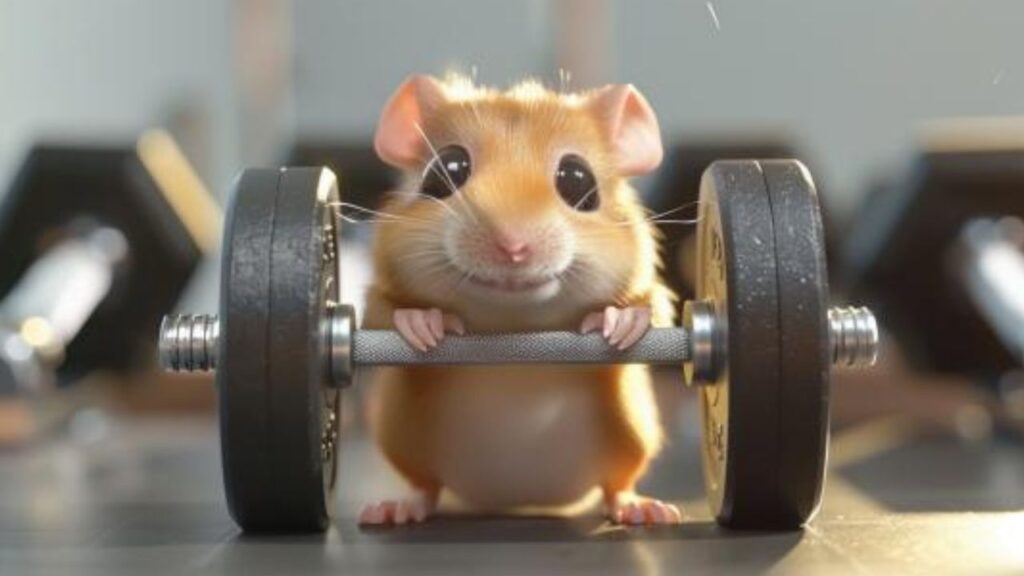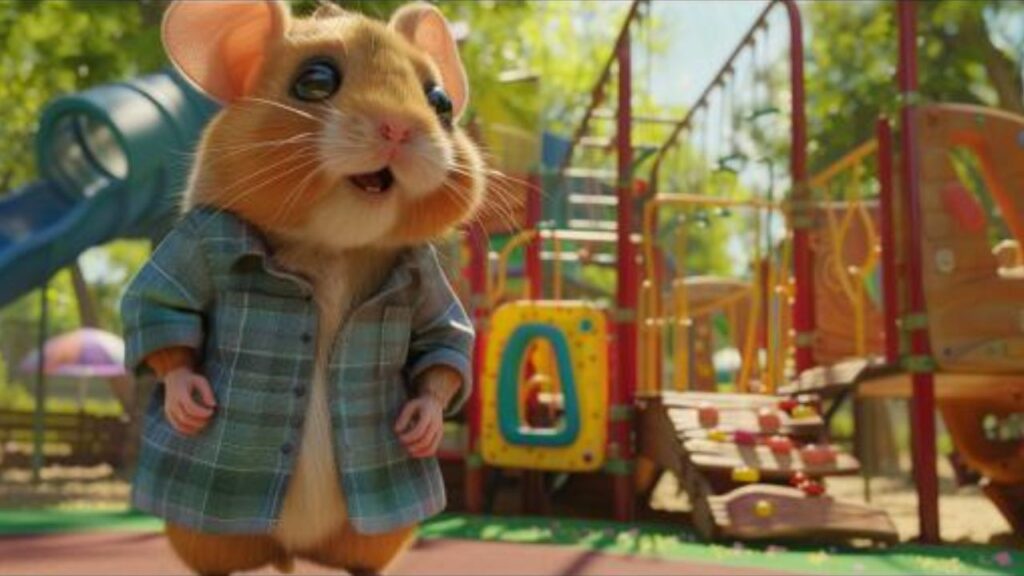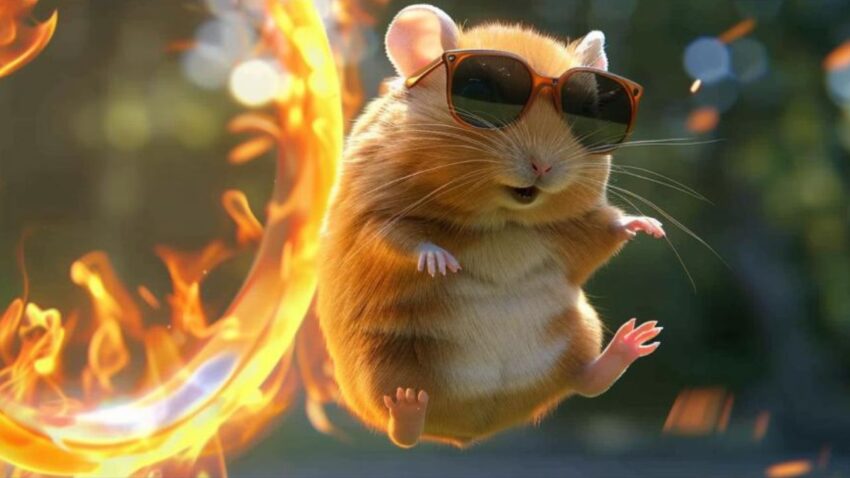Hello, fellow hamster enthusiasts! I’m Hannah Hammie, your guide to all things small and furry at Hamsters.club. Today, we’re diving into a topic close to my heart: “Treat Tricks: Teaching Your Hamster New Tricks with Positive Reinforcement.” Whether you’re a new hamster parent or looking to teach your old furball new tricks, this guide is packed with insights, laughter, and, most importantly, treats! So, let’s get our hamsters rolling in the right direction.
Understanding Your Hamster’s Behavior
First things first, understanding your hamster’s behavior is crucial before we start the training. Hamsters are naturally curious and active creatures, but they also have their unique personalities. Some may be shy and require more patience, while others might be little adventurers from the get-go. Observing your hamster’s daily habits, preferences, and body language will give you insights into how to approach training sessions effectively. Remember, a happy hamster is a trainable hamster!
The Power of Positive Reinforcement
Now, let’s talk about the magic wand in our training toolkit: positive reinforcement. This method focuses on rewarding desirable behaviors, which encourages your hamster to repeat them. The rewards can be treats, gentle petting, or even soft verbal praise (though let’s be honest, treats are the clear winner here). Positive reinforcement is not just about training; it’s about building trust and a deeper bond with your furry friend. It shows them that good things happen when they’re around you, making every interaction a positive one.
Setting Up for Successful Training Sessions
Before we embark on our training journey, setting the stage is key. Choose a quiet, safe space where your hamster feels comfortable and can focus without distractions. Ensure this area is escape-proof and has a flat surface for easy maneuvering. Gather your supplies—treats, a water dish, and any props you might need for specific tricks. Most importantly, training sessions should be short but sweet, ideally 5-10 minutes, to keep your hamster’s attention without causing stress.
Remember, hamster training is not just about the end result but about enjoying the journey together. With the right approach, you’ll not only teach your hamster amazing tricks but also strengthen your bond in ways you never imagined. So, armed with treats and a whole lot of patience, let’s get ready to transform our furry friends into the talented performers we know they can be.
Selecting the Right Treats

When it comes to hamster training, not all treats are created equal. The right treat can make all the difference in motivating your furry friend and reinforcing positive behaviors. Let’s dive into how to select the perfect treats to make your training sessions both effective and enjoyable.
Identifying Your Hamster’s Favorite Snacks
The first step in our treat-based training strategy is to figure out what snacks make your hamster’s heart flutter. Each hamster has its own preferences, and finding that special treat can make your training sessions much more successful. Start by offering a variety of healthy snacks in small quantities. Watch closely to see which ones your hamster goes for first and which ones they seem to enjoy the most. Common favorites include small bits of fruits like apple or banana, but remember, each hamster is an individual with unique tastes.
Healthy Treat Options for Training
While it’s tempting to use whatever treat gets the most enthusiastic response, it’s important to choose healthy options that won’t negatively impact your hamster’s diet. Overly sugary or fatty foods should be given sparingly, as they can lead to health issues over time. Instead, opt for treats that offer nutritional value in addition to being irresistible to your hamster. Small pieces of vegetables (like carrot or cucumber), plain, unsalted seeds, and occasional bits of hard-boiled egg are great choices. Always research any new treat to ensure it’s safe for hamsters.
Frequency and Quantity of Treat Rewards
Moderation is key when it comes to treat rewards. Even the healthiest treat can become a problem if given too frequently or in too large quantities. During training sessions, use the smallest piece of treat possible—one that’s just big enough for your hamster to enjoy but not so large that it fills them up after a few tricks. This approach keeps your hamster motivated and prevents overfeeding. As a general guideline, treats should make up no more than 10% of your hamster’s total diet to maintain their health and wellbeing.
Basic Training Techniques

Training your hamster can be a rewarding experience that strengthens your bond and provides mental stimulation for your furry friend. Let’s explore some basic training techniques, starting with trust-building exercises, then moving on to teaching your hamster to come when called, and finally, progressing to more complex tricks.
Trust Building Exercises
The foundation of any successful training is trust. Before you can teach your hamster any tricks, you need to establish a relationship based on mutual respect and understanding. Spend time with your hamster every day, allowing it to get used to your presence and scent. Begin by placing your hand inside the cage with a treat in your palm. Let your hamster approach you on its own terms, sniffing and eventually taking the treat from your hand. Gradually, as your hamster becomes more comfortable, you can start to gently stroke its back or scoop it up in your hands. Remember, patience is key—trust takes time to build.
The First Trick: Teaching Your Hamster to Come When Called
One of the simplest tricks to start with is teaching your hamster to come when called by name. This trick reinforces your bond and can be incredibly useful in various situations. Begin in a quiet, enclosed space to minimize distractions. Hold a treat in your hand and call your hamster’s name in a clear, consistent tone. When it comes to you, reward it with the treat. Repeat this exercise regularly, gradually increasing the distance between you and your hamster. Over time, your hamster will learn to associate its name with the positive experience of receiving a treat, making this trick a staple in your training repertoire.
Progressing to More Complex Tricks
After mastering the basics, you can introduce more complex tricks to keep your hamster engaged and challenged. Tricks such as navigating through a tunnel, spinning in a circle, or even pushing a miniature ball can be taught using the same principles of positive reinforcement. Start with one new trick at a time, breaking it down into small, achievable steps for your hamster. For example, to teach your hamster to navigate a tunnel, place a treat at the entrance and encourage your hamster to enter. Gradually increase the challenge by placing the treat further inside until your hamster is comfortable running through the entire length. Celebrate each small success with a treat and plenty of praise.
Advanced Hamster Training Tricks

As you and your hamster become more comfortable with basic training techniques, it’s time to elevate the challenge and fun. Advanced training tricks not only stimulate your hamster’s mind and body but also showcase the incredible bond you’ve developed through trust and positive reinforcement. Let’s explore how to master the obstacle course, delve into the art of hamster agility training, and discover creative tricks that will amaze everyone.
Mastering the Obstacle Course
Creating an obstacle course is a fantastic way to engage your hamster’s natural agility and curiosity. Start by designing a simple layout using items like tunnels, bridges, and hoops. Introduce your hamster to each element separately, using treats to encourage exploration and navigation. As your hamster becomes more confident, gradually link the elements together, forming a course. Always reward your hamster at the end of the course to reinforce successful completion. Remember, the key to mastering the obstacle course is patience and gradual progression. With each training session, you can add complexity to the course, challenging your hamster in new and exciting ways.
The Art of Hamster Agility Training
Hamster agility training takes the obstacle course to the next level, emphasizing speed and accuracy. This advanced training form requires a strong foundation of trust and communication between you and your hamster. Begin with simple agility tasks, such as weaving through cones or jumping over small barriers. Use a target stick or your hand to guide your hamster through the course, rewarding quick and precise movements. As your hamster’s agility improves, increase the course’s difficulty and introduce timed runs. Agility training is not only a thrilling experience for your hamster but also an excellent way to deepen your bond and enjoy quality time together.
Creative Tricks for You and Your Hamster
Beyond obstacle courses and agility training, there’s a world of creative tricks to explore with your hamster. These can range from playing dead to ringing a bell or even painting with tiny brushes. The key to teaching these unique tricks is to tap into your hamster’s natural behaviors and interests. For example, if your hamster enjoys pushing objects with its nose, you can teach it to push a miniature soccer ball into a goal. Use a step-by-step approach, rewarding each small achievement towards the final trick. Creative tricks not only provide mental and physical stimulation for your hamster but also create unforgettable moments and stories to share.
Hannah’s Training Tactics

As we delve deeper into the world of hamster training, I want to share with you some of my personal tactics that have helped me turn even the most timid hamsters into confident trick performers. Remember, every hamster has its unique personality, and what works for one may not work for another. However, these guidelines can serve as a foundation for a successful training journey.
Timing is Everything: When to Reward
One of the most crucial aspects of training is knowing exactly when to reward your hamster. The timing of rewards plays a significant role in how quickly and effectively your hamster learns new behaviors. Ideally, you should reward your hamster within a few seconds of performing the desired action. This immediate reinforcement helps your hamster make a clear connection between the action and the reward. If you wait too long, your hamster might not associate the treat with the specific behavior you’re trying to encourage. For instance, if you’re teaching your hamster to come when called, the treat should be given as soon as it arrives at your hand, not after it’s wandered off again.
Patience and Consistency: The Key to Success
Patience and consistency are your best friends in the realm of hamster training. Some tricks may take only a few sessions to master, while others could take weeks or even months. The key is to maintain a positive attitude and keep sessions enjoyable for both you and your hamster. Stick to a regular training schedule, ideally working with your hamster at the same time each day. This consistency helps establish a routine, making your hamster more comfortable and receptive to learning. Moreover, be patient with both your hamster and yourself. Celebrate the small victories and remember that every hamster progresses at its own pace.
Troubleshooting Common Training Challenges
Even with the best planning, you’re likely to encounter some challenges along the way. Here are a few common issues and how to address them:
- Lack of Interest: If your hamster seems uninterested in training, it might not be the right time. Make sure your hamster is well-rested and not too hungry or full. Try different treats to see if a more tempting reward sparks interest.
- Fearfulness: A scared hamster won’t be in the right state of mind for learning. Focus on trust-building exercises and create a calm, quiet training environment. Avoid sudden movements and loud noises that could startle your hamster.
- Forgetting Tricks: Hamsters, like humans, can forget what they’ve learned if not regularly practiced. Keep sessions short but frequent, and revisit old tricks regularly to keep them fresh in your hamster’s mind.
Keeping Training Sessions Fun and Rewarding

Creating a positive and engaging training environment is essential for both you and your furry companion. Training should never feel like a chore; it should be a fun and rewarding experience. Let’s explore how to keep your hamster eager and excited for each training session.
Mixing Up the Routine to Keep Your Hamster Engaged
Variety is not just the spice of life for humans but for hamsters too! Mixing up your training routine can keep your hamster interested and motivated. Here’s how:
- Introduce New Tricks Gradually: Once your hamster has mastered a trick, begin introducing a new one to keep the learning process exciting. However, ensure not to overwhelm your little learner by introducing too many tricks at once.
- Change the Training Environment: Occasionally changing the training environment can stimulate your hamster’s curiosity and engagement. If you usually train in a quiet room, try a different room (still ensuring it’s safe and escape-proof) to add some variety.
- Use Different Treats: Alternate between a few favorite treats to keep your hamster guessing and excited about what’s coming next. This can also prevent your hamster from getting bored with the same reward.
Recognizing and Celebrating Progress
Every small step your hamster takes towards learning a new trick is an achievement worth celebrating. Here’s how to acknowledge progress:
- Celebrate Small Victories: Even if your hamster hasn’t fully mastered a trick, reward attempts and partial successes. This encouragement will boost their confidence and willingness to try.
- Show Enthusiasm: Your hamster can pick up on your energy. Showing excitement and enthusiasm when your hamster makes progress can enhance their eagerness to learn.
- Keep a Training Diary: Tracking your hamster’s progress can be incredibly rewarding. Note down milestones and improvements, no matter how small, to keep track of how far you both have come.
When to End a Training Session
Knowing when to end a training session is crucial for keeping your hamster’s spirits high. Here are some signs it’s time to wrap up:
- Loss of Interest: If your hamster seems distracted or stops responding to treats, it’s a good indicator that they’ve had enough for the day.
- Signs of Stress: Keep an eye out for signs of stress or fatigue, such as yawning, grooming excessively, or trying to escape. These behaviors suggest your hamster needs a break.
- End on a High Note: Try to end the session after a successful attempt at a trick, even if it’s a simple one. This leaves both of you feeling positive and looking forward to the next session.
Remember, the goal of training is to strengthen your bond with your hamster and enrich their life with mental stimulation. By keeping sessions fun, recognizing progress, and knowing when to call it a day, you ensure that training remains a delightful experience for your furry friend.
Conclusion

As we wrap up our journey into the world of hamster training with positive reinforcement, it’s important to reflect on the broader picture. Training your hamster isn’t just about teaching them tricks; it’s a pathway to numerous long-term benefits that enhance the quality of life for both you and your furry companion. Let’s delve into these benefits and offer a word of encouragement to all the new hamster owners embarking on this rewarding journey.
The Long-Term Benefits of Positive Reinforcement Training
Positive reinforcement training goes beyond the immediate joy of seeing your hamster spin in circles or navigate an obstacle course. It lays the foundation for a well-adjusted pet that feels safe and secure in its environment. This training method:
- Promotes Mental Stimulation: Regular training sessions provide mental exercise that is just as crucial as physical activity. It keeps your hamster’s brain active and engaged, warding off boredom and related behavioral issues.
- Enhances Communication: Through training, you learn to understand your hamster’s body language and cues, and your hamster learns to understand yours. This two-way communication fosters a deeper mutual understanding.
- Improves Handling: Hamsters that are accustomed to interacting with humans through positive reinforcement are generally more comfortable being handled. This can make health checks and cage cleaning less stressful for both of you.
Building a Stronger Bond with Your Hamster
The time and patience invested in training your hamster with kindness and respect have the profound effect of strengthening your bond. This bond is not merely about companionship; it’s a trust pact that tells your hamster, “You are safe with me.” It’s seeing your hamster eagerly approach the cage door when you enter the room or gently take a treat from your hand. These moments, as simple as they may seem, are the building blocks of a relationship built on trust and affection.
Encouragement for New Hamster Owners
If you’re a new hamster owner feeling overwhelmed by the prospect of training your pet, take heart. Remember, every expert was once a beginner. Training your hamster offers an incredible opportunity to learn and grow alongside your pet. Embrace the process with an open heart and a lot of patience. Celebrate the small victories, learn from the setbacks, and keep moving forward. Your hamster is not just a pet; it’s a companion on a shared journey of discovery and learning.
As we conclude, I hope this guide inspires you to embark on the rewarding path of positive reinforcement training. Whether you’re teaching the simplest of tricks or navigating the complexities of an obstacle course, the journey is sure to bring a wealth of joy, laughter, and learning.




